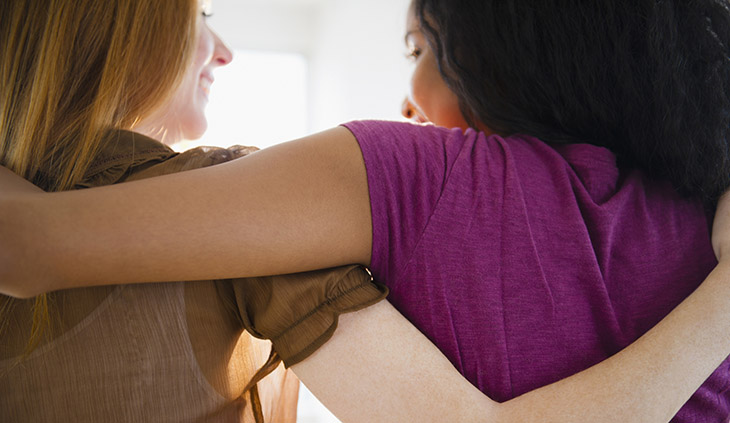WHAT IS ANXIETY?
 Anxiety is a NORMAL EMOTION that helps us cope with difficult, challenging, or dangerous situations.
Anxiety is a NORMAL EMOTION that helps us cope with difficult, challenging, or dangerous situations.
Anxiety is COMMON in regular life and can help us get things done or warns us when there is a problem (example: worry about getting a good grade on a test can help motivate us to study or feeling uncomfortable around a particular person/place/thing that may be unsafe can warn us to avoid situations with that person/place/thing).
Anxiety becomes a problematic when it HINDERS YOUR CHILD from enjoying normal life and affecting their school, work, family relationships, friendships, or social life.
BRAIN AND BODY RESPONSE
It can be helpful to understand some basic brain science behind anxiety. Emotions like FEAR and ANGER are regulated by our limbic system. Within that system  the amygdala is the “watch dog” constantly scanning for possible danger. When our watch dog sees a potential threat we go into fight, flight, or freeze mode. This involves a release of stress hormones (adrenaline and cortisol) through the bloodstream designed to help us avoid danger and causes any number of the following physical changes:
the amygdala is the “watch dog” constantly scanning for possible danger. When our watch dog sees a potential threat we go into fight, flight, or freeze mode. This involves a release of stress hormones (adrenaline and cortisol) through the bloodstream designed to help us avoid danger and causes any number of the following physical changes:
• Increased heart rate
• Shallow breathing/tight chest
• Dizziness/light-headedness
• Muscle tension
• Sweating
• Blurred or tunnel vision
• Butterflies or nausea
• Digestive upset
• Decreased immune system
MINDING OUR THOUGHTS
Sometimes there is a clear external trigger or reason for feeling anxious like a facing a difficult exam or adjusting to something new life change (the birth of a sibling, a new teacher, starting middle school, etc.). And sometimes the WAY WE THINK about things actually triggers anxiety. We may think:

• Things will go wrong – Nothing ever goes right!
• We will be unsuccessful – I can’t do it!
• We will not be able to cope – I can’t handle it!
These negative thoughts or worries can make it hard to concentrate and think straight and trigger physical symptoms to become worse.
WHAT WE DO…OR DON’T DO
Anxiety is unpleasant and so we find ways of making ourselves feel better. We may stop doing things that worry us. The more we avoid things, the less we do and the harder it becomes to face our fears and overcome our worries.
WHAT IS COGNITIVE BEHAVIORAL THERAPY (CBT)?
Cognitive Behavioral Therapy (CBT) is based on the idea that how we feel and what we do are directly connected to the way we think. Research shows that CBT is one the most effective ways of helping children with anxiety problems.
CBT assumes that a lot of problems with anxiety are generated in our thinking. Because we have the power to change the way we think we can learn to influence and change our emotional and behavioral responses.
Thinking in more positive ways can help us feel more hopeful.
Thinking in more negative ways may make us feel fearful, tense, sad angry, or uncomfortable.
Teaching children to understand their thoughts is important. Children with anxiety tend to:

• Think in negative and critical ways
• Overestimate the likelihood of bad things happening
• Focus on the things that go wrong
• Underestimate their ability to cope
• Expect failure
CBT is a practical and fun way of helping children to:
• Identify these negative ways of thinking
• Discover the link between what they think, how they feel, and what they do
• Check out the evidence for their thoughts
• Develop new skills to cope with their anxiety
SUPPORT YOUR CHILD IN THE PROCESS
S – Show your child how to be successful by modeling success when you face anxiety provoking situations
U – Understand that your child has is facing a difficult challenge right now. They are not being naughty or willful. They need your help and support.
P – Patience in the process. New skills take time to master. Be patient as your child is learning.
P – Prompt new skills. Remind your child to practice their new tools.
O – Observe your child to notice positive changes and small successes.
R – Reward with descriptive praise. Use praise to highlight specific things you see – “Wow. I noticed you took a deep breath when your homework was getting difficult instead of yelling. That took really good self-control!”
T – Talk about it. Talking with your child shows them that you care will help them feel supported.
Your support can increase gains in the therapeutic process and help your child feel close to you in the midst of their challenges and growth.
Adapted with permission from Anxiety by Paul Stallard, published by Routledge
www.routledgementalhealth.com/cbt-with-children
Download this article in pdf format.
Please note: Nothing in what you find here should be construed as medical advice pertinent to any individual. As is true with all written materials, and especially information found on the internet, you must be the judge of what appears valid and useful for yourself. Please take up any questions you might have regarding the content of this website with your psychotherapist or physician.
Original publish date November 2014.


